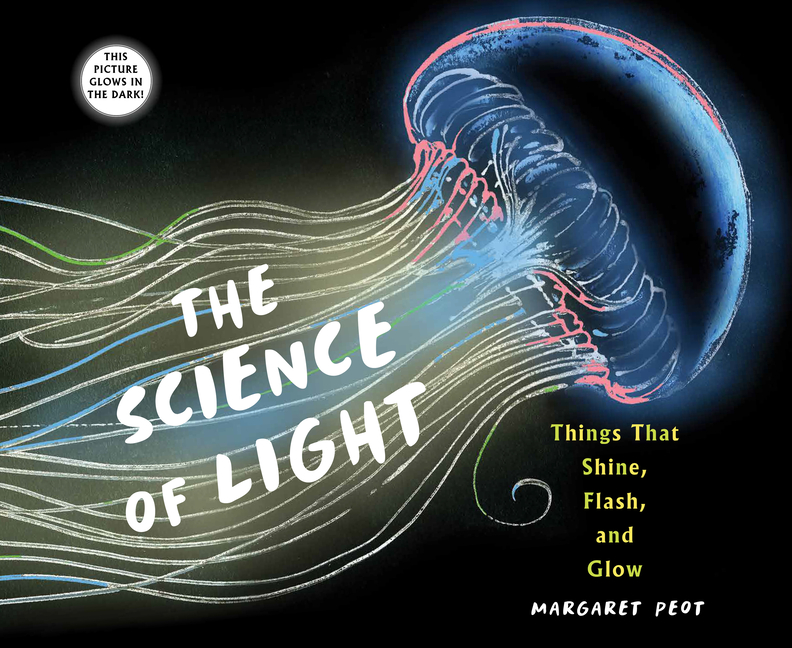Meet-the-Author Recording with Margaret Peot
The Science of Light: Things That Shine, Flash, and Glow |
Margaret Peot introduces and shares some of the backstory for creating The Science of Light: Things That Shine, Flash, and Glow.
Translate this transcript in the header View this transcript Dark mode on/off
Margaret Peot: Hi, my name is Margaret Peot. And I am the author and illustrator of The Science of Light: Things that Shine, Flash, and Glow. I work as a costume painter for Broadway shows and arena shows. And a designer had come in and asked us to make glow-in-the-dark fish for an ice show. So we did a lot of studying about all these different creatures that glow in the dark. Studying those things got me interested in bioluminescence and bioluminescent creatures. Bioluminescence is when plants and animals and other living things produce light, like a lot of kids have probably seen fireflies or lightning bugs. Just as an artist, I wanted to try to figure out how to paint something that actually looked like it was glowing. It just was an interesting problem to me. And because I've been so fascinated by light, campfire, cozy candles, the sunshine in the winter that doesn't last very long during the day, I wanted to try to recreate that inside a book.
So my process, as I said, I wanted to figure out a way to make the pictures really glow, really appears if they're glowing off the page. And so I used a technique called gouache resist. And that's when you use a kind of paint called gouache. It's not too much different from your tempera that you use in the classroom. It's a watercolor that is solid, you can't see through it. So what I did, so for example, if you look at the crystal jellyfish page, the jellyfish is also on the cover, on a piece of white paper I painted all the white lines you see. I painted all the white lines and also the glowing part around the top of the jellyfish with whitewash. And then I let it dry.
And then I took India ink, which is a black waterproof ink, and I painted all over every single bit of it, so you couldn't see anything at all. It just was a black piece of paper. And then you let that dry, your picture looks ruined. So then you take that piece of paper to the sink and you run cold water over it, with your fingers you gently kind of rub the gouache. And the gouache dissolves and washes away, and it leaves you with these glowing white lines in the middle of a black ground. And then I added color, and then I put it into Photoshop and added some glowy bits.
So now I'd like to describe a spread from The Science of Light: Things that Shine, Flash, and Glow, where I used that gouache resist technique. On page six, and seven, the text reads, "Aurora borealis glimmers." And the aurora borealis, sometimes it's called the Northern Lights. And it looks like these shimmery light curtains, like green undulating light curtains. And I had heard about aurora borealis since I was a little girl, my father could see them because he grew up in Washington state, more north than I grew up in Ohio. But I did get to see them. I went on a trip to Canada and they looked like drapes in the sky or something, kind of undulating green drapes in the sky. So I used the gouache resist technique here by painting all of the parallel lines that define the drapes, I painted with whitewash. And then again, I painted over it with black ink and then rinsed it so that all you could see were the white lines. And then I painted back into them with the green and aqua kind of colors of the aurora borealis.
This Meet-the-Author Recording with Margaret Peot was exclusively created in February 2023 by TeachingBooks with thanks to Holiday House.




